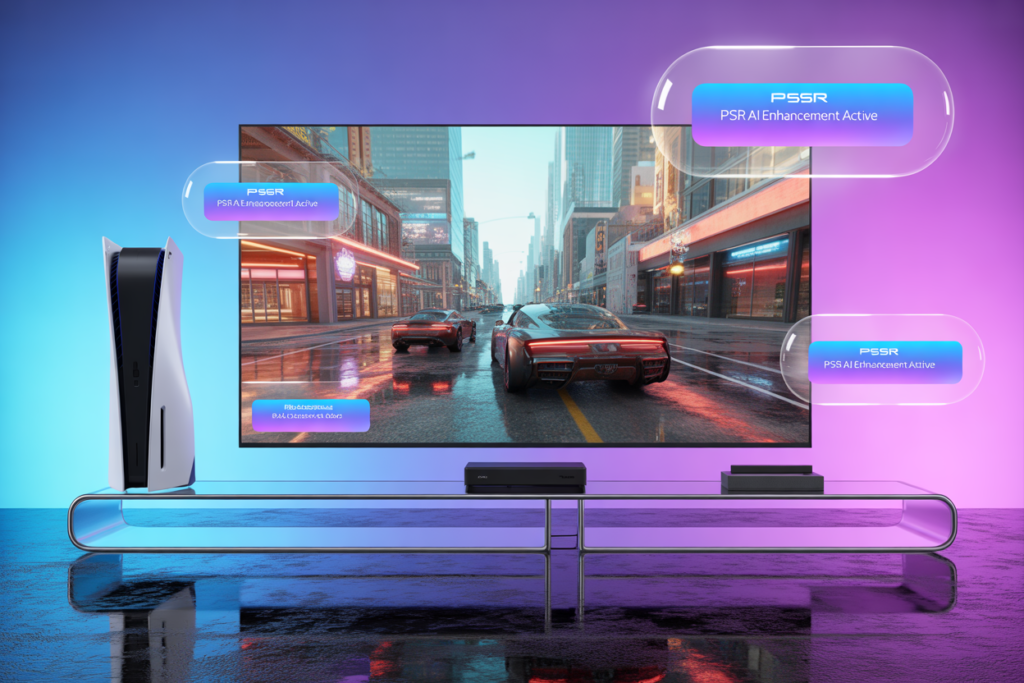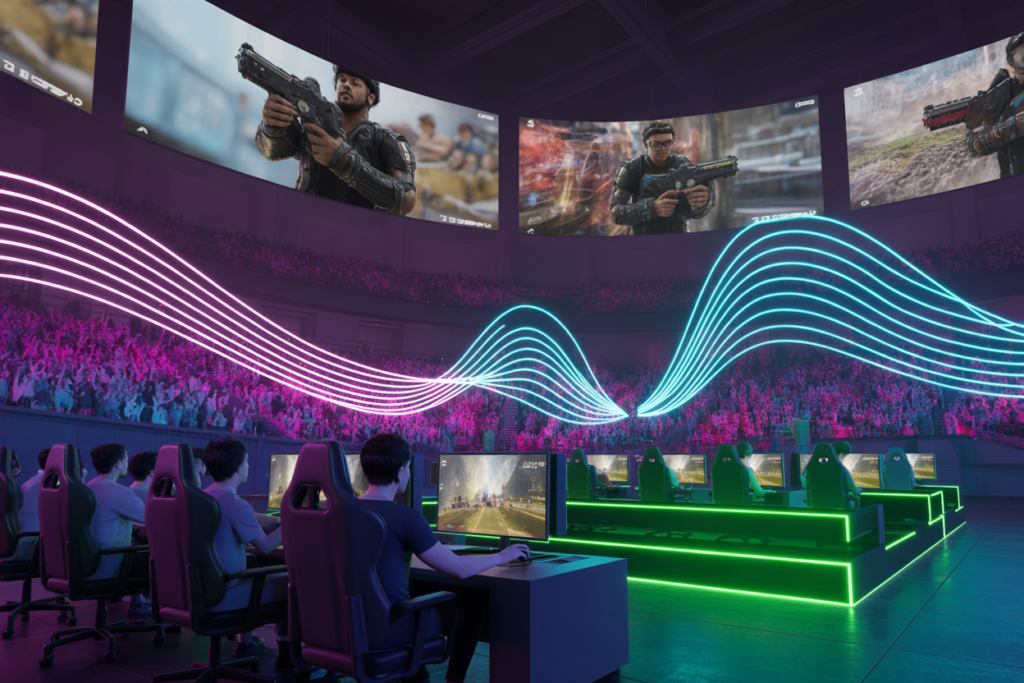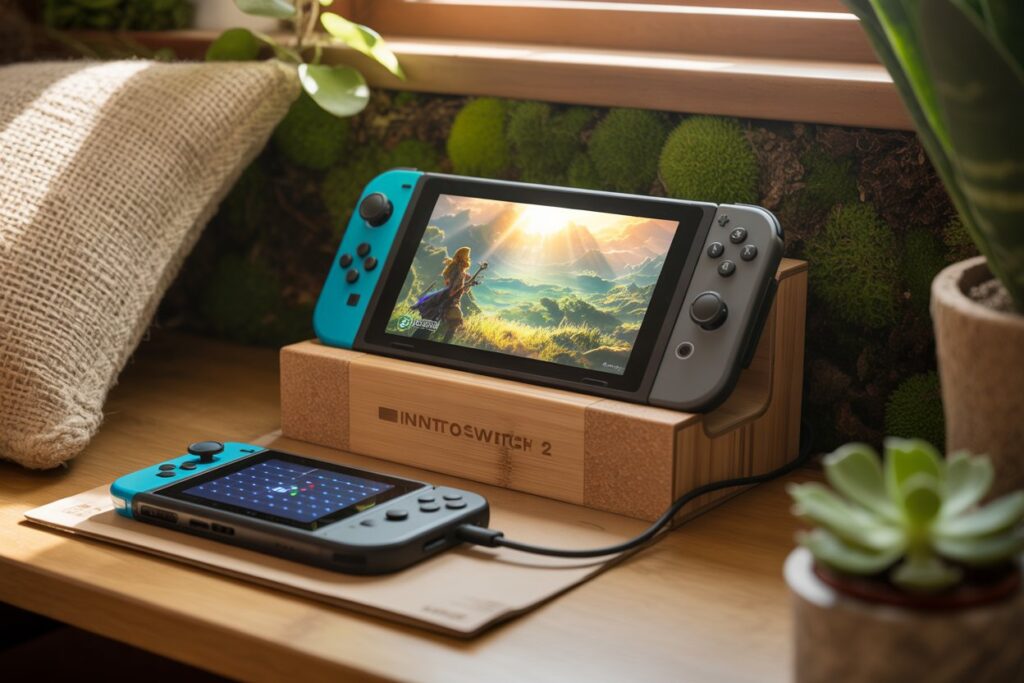The Evolution of Gaming Consoles: From Pixelated Pioneers to AI-Driven Powerhouses
Introduction
Gaming consoles have journeyed from rudimentary boxes delivering blocky visuals to sophisticated ecosystems that blend cutting-edge hardware, artificial intelligence (AI), cloud gaming, and immersive storytelling. Since the 1970s, these devices have evolved from niche novelties to cultural juggernauts, shaping entertainment, social connection, and even education. The global gaming console market, valued at $52.14 billion in 2024, is projected to soar to $81.36 billion by 2030, growing at a compound annual growth rate (CAGR) of 7.7%, driven by advancements in graphics, connectivity, and accessibility. In 2025, consoles like the PlayStation 5 Pro, Xbox Series X|S, and the anticipated Nintendo Switch 2 push boundaries with 8K visuals, AI upscaling, and seamless cloud integration, catering to diverse audiences from casual players to esports professionals. This article traces the historical evolution of gaming consoles, explores their technological advancements, highlights key applications, addresses challenges, and envisions their future, underscoring their transformative impact on society and technology.
The Fundamentals of Gaming Consoles
What Is a Gaming Console?
A gaming console is a specialized electronic device designed primarily for video games, typically connected to a television or monitor. Unlike general-purpose PCs, consoles prioritize ease of use, optimized performance, and affordability. Core components include:
- Central Processing Unit (CPU) and Graphics Processing Unit (GPU): Handle game logic, physics, and rendering, e.g., the PS5 Pro’s custom AMD chip with 16.7 teraflops.
- Storage: Solid-state drives (SSDs) or hard disk drives (HDDs) store games, with 2025 models offering 1-2TB capacities.
- Controllers: Feature joysticks, buttons, and haptics for precise input.
- Connectivity: Wi-Fi 7, 5G, and Ethernet enable online play and streaming.
- Operating System: Proprietary software like Sony’s Orbis OS or Microsoft’s Xbox OS manages games, apps, and user interfaces.
Consoles in 2025 integrate streaming services (Netflix, Spotify), voice assistants, and cloud gaming, making them versatile entertainment hubs. Prices range from $299 for budget models like the Xbox Series S to $699.99 for the PS5 Pro.
The Historical Context
The console saga began in 1972 with the Magnavox Odyssey, a primitive device with analog controls and no sound, laying the foundation for home gaming. The 1980s saw the industry mature with the Atari 2600 and Nintendo Entertainment System (NES), while the 1990s introduced 3D graphics via Sony’s PlayStation. The 2000s ushered in online gaming with Xbox Live, and the 2010s blended portability with power in the Nintendo Switch. By 2025, consoles leverage AI, ray tracing, and cloud infrastructure, evolving from standalone devices to interconnected platforms that bridge gaming, media, and social experiences.
The Evolution of Gaming Consoles by Generation
First and Second Generations (1972–1984): The Birth of Home Gaming
The Magnavox Odyssey (1972) marked the first generation, offering basic paddle games with overlays for TV screens, selling 350,000 units despite limited graphics. The second generation, led by the Atari 2600 (1977), popularized cartridge-based gaming with titles like Pac-Man, selling 30 million units. The 1983 market crash, caused by oversaturation, nearly killed the industry until the Nintendo Entertainment System (NES, 1983) revived it with strict quality control and iconic franchises like Super Mario Bros., selling 61.9 million units.
Key Features:
- Cartridge systems for game variety.
- Simple 2D sprites and chiptune audio.
- Analog controllers with limited buttons.
Third and Fourth Generations (1985–1993): The 8-Bit and 16-Bit Boom
The third generation saw the NES dominate with 8-bit graphics and games like The Legend of Zelda. Sega’s Master System competed but trailed with 13 million units sold. The fourth generation introduced 16-bit consoles: the Sega Genesis (1988) and Super Nintendo Entertainment System (SNES, 1990) brought vibrant visuals and soundtracks. Sonic the Hedgehog and Final Fantasy III defined the era, with SNES selling 49.1 million units.
Advancements:
- Enhanced color palettes (256 colors vs. 64).
- Complex controllers with D-pads and multiple buttons.
- Early multiplayer via split-screen.
Fifth and Sixth Generations (1994–2005): The 3D Revolution
The fifth generation introduced 3D graphics with the Sony PlayStation (1994) and Nintendo 64 (1996). Final Fantasy VII and Super Mario 64 showcased storytelling and open worlds, with PlayStation selling 102.4 million units. The sixth generation’s PlayStation 2 (2000) became the best-selling console ever at 155 million units, offering DVD playback and early online play. Microsoft’s Xbox (2001) introduced Xbox Live, revolutionizing multiplayer with Halo.
Innovations:
- CD-ROMs for larger game data.
- Online connectivity via dial-up.
- 3D rendering with polygon-based graphics.
Seventh and Eighth Generations (2005–2020): HD and Casual Gaming
The seventh generation brought HD graphics with the Xbox 360 (2005), PlayStation 3 (2006), and Nintendo Wii (2006). The Wii’s motion controls targeted families, selling 101.6 million units with Wii Sports. The eighth generation’s PS4 (2013), Xbox One (2013), and Nintendo Switch (2017) emphasized ecosystems. The Switch, a hybrid console, sold 141 million units by 2025, blending portability with home gaming via Animal Crossing.
Breakthroughs:
- Blu-ray discs for high-capacity storage.
- Motion controls and touchscreens.
- Social features like trophies and friend lists.
Ninth Generation (2020–Present): AI, Cloud, and Immersion
Launched in 2020, the PS5 and Xbox Series X|S introduced SSDs for near-instant loading and ray tracing for photorealistic lighting. The PS5 Pro (2024) enhances 4K/120fps gaming with PlayStation Spectral Super Resolution (PSSR), a 67% performance boost over the base model. The Nintendo Switch 2, rumored for 2025, promises 4K via NVIDIA’s DLSS 3 and a hybrid design. Cloud gaming via Xbox Game Pass Ultimate and Amazon Luna reduces hardware dependency, with 5G enabling lag-free streaming.
Key Features:
- 8K-capable GPUs and AI upscaling.
- SSDs with 5.5GB/s read speeds.
- Cloud integration for instant access.
Major Advancements in 2025 Gaming Consoles
1. Graphics and AI-Powered Rendering
Graphics in 2025 consoles rival high-end PCs, with ray tracing delivering lifelike reflections and shadows. The PS5 Pro’s PSSR uses AI to upscale 1080p to 4K/8K, achieving 60-120fps in titles like GTA VI. AMD’s FSR 3 and NVIDIA’s DLSS 3.5, expected in Switch 2, enhance visuals on lower-spec hardware, cutting power use by 20%. GPUs like the PS5 Pro’s custom AMD chip deliver 16.7 teraflops, a leap from the PS5’s 10.28.
Applications:
- Cinematic Immersion: Ray-traced Horizon Forbidden West visuals mimic reality.
- Accessibility: Upscaling enables high-end graphics on budget consoles.
- Efficiency: AI optimizes frame rates for smoother play.

2. Storage and Speed Enhancements
SSDs have revolutionized load times, with the PS5’s 825GB NVMe SSD hitting 5.5GB/s and the Xbox Series X’s 1TB SSD supporting DirectStorage for seamless asset streaming. In 2025, 2TB SSDs are standard in premium models like the PS5 Pro, addressing ballooning game sizes (Call of Duty exceeds 200GB). Expandable M.2 slots and cloud backups ensure flexibility, while UFS storage in the Switch 2 balances cost and speed.
Impact:
- Instant Loading: Spider-Man 2 loads in under 2 seconds.
- Scalability: Cloud syncs saves across devices.
- Portability: Compact SSDs suit hybrid consoles.
3. Cloud Gaming and Connectivity
Cloud gaming, powered by 5G and Wi-Fi 7, eliminates hardware barriers. Xbox Game Pass Ultimate streams 4K titles to Series S, while Amazon Luna and GeForce Now offer AAA games on low-spec devices. Latency drops to 10ms with 5G, enabling competitive play in Fortnite. Cross-platform play unites PC, console, and mobile, with 150 million monthly users on PSN and Xbox Live.
Applications:
- Global Access: Cloud delivers AAA titles to rural areas.
- Multiplayer: Seamless lobbies for Apex Legends.
- Streaming: Twitch broadcasts with zero lag.

4. Advanced Controllers and Haptics
Controllers have evolved into immersive tools. The PS5 DualSense’s adaptive triggers and haptic feedback simulate weapon recoil or terrain in God of War Ragnarök. Xbox’s Elite Series 3 offers customizable paddles, while the Switch 2’s rumored Joy-Cons include IR cameras for motion control. In 2025, AI adjusts haptics dynamically, enhancing immersion by 30%.
Impact:
- Realism: Haptics mimic rain in Horizon.
- Accessibility: Remappable inputs aid disabled gamers.
- Durability: Drift-resistant sticks extend controller life.
5. AI-Driven Gameplay and Features
AI transforms gameplay with dynamic NPCs in Starfield expansions, using generative AI for unique dialogue. Consoles leverage AI for predictive matchmaking, cutting lobby times by 40%. Voice assistants like Xbox’s Copilot offer in-game tips, while AI moderates toxic chats, improving community health.
6. Sustainability and Modular Design
Eco-conscious designs use recycled plastics, with Sony’s PS5 Pro cutting packaging waste by 25%. Modular upgrades, like swappable SSDs, extend console lifespans to 10+ years, reducing e-waste. Low-power modes save 15% energy during streaming.

Applications of Gaming Consoles
1. Entertainment and Gaming
Consoles deliver diverse experiences: AAA titles (Elden Ring), indies (Hollow Knight), and VR via PSVR2. Cloud streaming enables instant play without downloads.
2. Social and Multiplayer Platforms
Online ecosystems connect 150 million monthly users, with cross-play in Fortnite boosting engagement by 30%. Discord integration enhances voice chats.
3. Education and Training
Educational games like Kerbal Space Program teach physics, while VR simulators train pilots or surgeons. Schools use consoles for interactive learning.
4. Media and Entertainment Hubs
Consoles stream 4K Netflix, Disney+, and Spotify in Dolby Vision. The Xbox Series X integrates YouTube for content creators.
Challenges in Gaming Console Evolution
1. Cost and Accessibility
Premium consoles like the PS5 Pro ($699.99) strain budgets, with digital-only Xbox Series S ($299) as a budget option. Developing regions face import barriers.
2. Hardware Limitations
Consoles lag behind PCs in raw power; mid-cycle refreshes add cost. Cloud gaming requires 25Mbps+ internet, excluding rural areas.
3. Digital Ownership Concerns
Digital sales (70% in 2024) raise fears of lost access if servers shut down. Physical discs decline, limiting collector options.
4. Environmental Impact
Console production generates 50,000 tons of e-waste annually. High-power GPUs consume 300W, challenging green goals.
The Future of Gaming Consoles
1. Cloud and AI Integration
By 2030, cloud gaming will dominate 50% of playtime, with consoles as streaming hubs. AI will craft personalized narratives, adapting stories to player choices.
2. AR/VR and Mixed Reality
PSVR3 and Xbox VR headsets will blend AR for immersive worlds by 2030. Holographic displays may emerge by 2035.
3. Sustainable and Modular Consoles
Swappable GPUs and recyclable materials will cut e-waste by 40%. Solar-assisted docks could power future Switch models.
Prediction: Consoles will add $200 billion to global economies by 2030, merging gaming with education and social platforms.
Societal Implications
Consoles foster community, reducing isolation via multiplayer, but addiction affects 10% of gamers. They drive economic growth through development jobs and esports, yet digital divides limit access in low-income regions. Sustainable practices and affordable models ensure inclusivity, while parental controls address health concerns.
Conclusion
From the Magnavox Odyssey’s analog origins to the PS5 Pro’s AI-enhanced 8K visuals, gaming consoles have woven a rich tapestry of technological and cultural progress. In 2025, advancements like ray tracing, cloud gaming, and eco-designs redefine play, with the Switch 2 poised to bridge portability and power. Challenges like cost and e-waste persist, but the future—blending AR, AI, and sustainability—promises a gaming landscape that’s inclusive, immersive, and transformative. Consoles are no longer just devices; they’re gateways to shared worlds, connecting us across generations and geographies.
Leave a Reply